Nortel Networks BCM50 User Manual
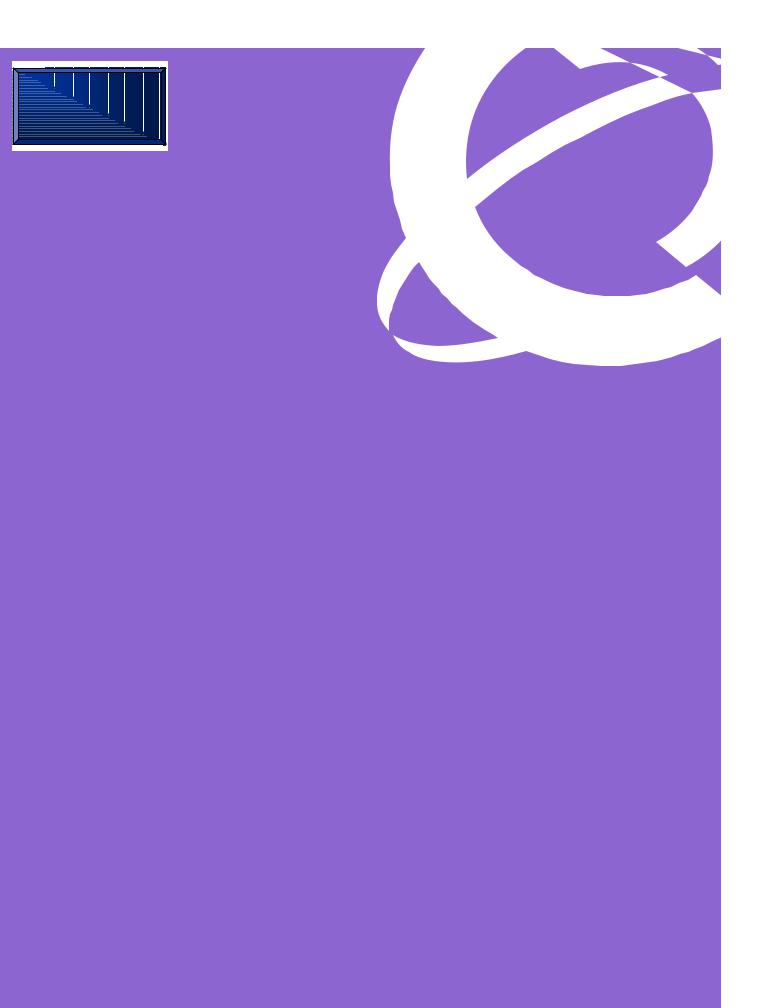
Return |
to Menu |
BCM50 Installation and
Maintenance Guide
Part No. N0027152 01
08 April 2005

2
Copyright © Nortel Networks Limited 2005
All rights reserved.
The information in this document is subject to change without notice. The statements, configurations, technical data, and recommendations in this document are believed to be accurate and reliable, but are presented without express or implied warranty. Users must take full responsibility for their applications of any products specified in this document. The information in this document is proprietary to Nortel Networks.
Trademarks
*Nortel, Nortel (Logo), the Globemark, and This is the way, This is Nortel (Design mark) are trademarks of Nortel Networks. *Microsoft, MS, MS-DOS, Windows, and Windows NT are registered trademarks of Microsoft Corporation.
All other trademarks and registered trademarks are the property of their respective owners.
N0027152 01
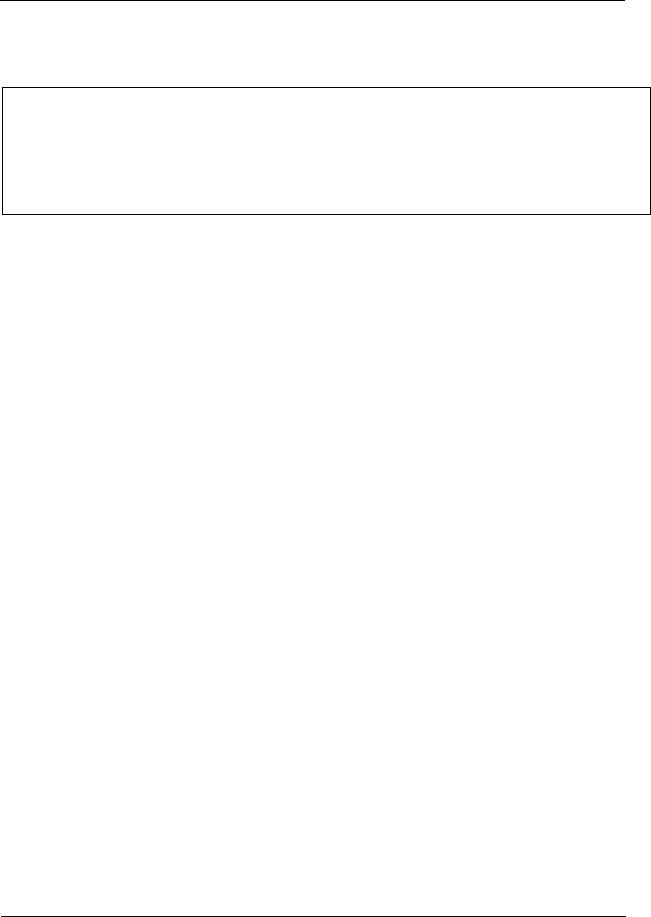
3
SOFTWARE LICENSE
NORTEL NETWORKS INC. ("NORTEL NETWORKS") TELECOMMUNICATION PRODUCTS
THIS LEGAL DOCUMENT IS A LICENSE AGREEMENT ("License") BETWEEN YOU, THE END-USER ("CUSTOMER") AND NORTEL NETWORKS. PLEASE READ THIS LICENSE CAREFULLY BEFORE USING THE SOFTWARE. BY USING THIS SOFTWARE, YOU, THE CUSTOMER, ARE AGREEING TO BE BOUND BY THE TERMS OF THIS LICENSE. IF YOU DO NOT AGREE TO THE TERMS OF THIS LICENSE, RETURN THE UNUSED SOFTWARE AND THE ASSOCIATED DOCUMENTATION TO NORTEL NETWORKS THROUGH A NORTEL NETWORKS AUTHORIZED DISTRIBUTOR WITHIN FIVE (5) DAYS OF YOUR ACQUISITION OF THE SOFTWARE FOR A REFUND.
Subject to the terms hereinafter set forth, NORTEL NETWORKS grants to CUSTOMER and/or its representatives, with a "need to know," a personal, non-exclusive license (1) to use the licensed software, proprietary to NORTEL NETWORKS or its suppliers and (2) to use the associated documentation. CUSTOMER is granted no title or ownership rights, in or to the licensed software, in whole or in part, and CUSTOMER acknowledges that title to and all copyrights, patents, trade secrets and/or any other intellectual property rights to and in all such licensed software and associated documentation are and shall remain the property of NORTEL NETWORKS and/or NORTEL NETWORKS’ suppliers. The right to use licensed software may be restricted by a measure of usage of applications based upon number of lines, number of ports, number of terminal numbers assigned, number of users, or some similar measure. Expansion beyond the specified usage level may require payment of an incremental charge or another license fee.
NORTEL NETWORKS considers the licensed software to contain "trade secrets" of NORTEL NETWORKS and/or its suppliers. Such "trade secrets" include, without limitation thereto, the specific design, structure and logic of individual licensed software programs, their interactions with other portions of licensed software, both internal and external, and the programming techniques employed therein. In order to maintain the "trade secret" status of the information contained within the licensed software, the licensed software is being delivered to CUSTOMER in object code form only.
NORTEL NETWORKS or any of its suppliers holding any intellectual property rights in any licensed software, and/or any third party owning any intellectual property rights in software from which the licensed software was derived, are intended third party beneficiaries of the License. All grants of rights to use intellectual property intended to be accomplished by this License are explicitly stated. No other grants of such rights shall be inferred or shall arise by implication.
CUSTOMER warrants to NORTEL NETWORKS that CUSTOMER is not purchasing the rights granted by this License in anticipation of reselling those rights.
CUSTOMER shall:
•Hold the licensed software in confidence for the benefit of NORTEL NETWORKS and/or NORTEL NETWORKS’ suppliers using no less a degree of care than it uses to protect its own most confidential and valuable information; and
•Keep a current record of the location of each copy of licensed software made by it; and
•Install and use each copy of licensed software only on a single CPU at a time (for this purpose, single CPU shall include systems with redundant processing units); and
•Affix to each copy of licensed software made by it, in the same form and location, a reproduction of the copyright notices, trademarks, and all other proprietary legends and/or logos of NORTEL NETWORKS and/or NORTEL NETWORKS’ suppliers, appearing on the original copy of such licensed software delivered to CUSTOMER; and retain the same without alteration on all original copies; and
•Issue instructions to each of its authorized employees, agents and/or representatives to whom licensed software is disclosed, advising them of the confidential nature of such licensed software and to provide them with a summary of the requirements of this License; and
•Return the licensed software and all copies through an Authorized Distributor to NORTEL NETWORKS at such time as the CUSTOMER chooses to permanently cease using it.
CUSTOMER shall not:
•Use licensed software (i) for any purpose other than CUSTOMER’s own internal business purposes and (ii) other than as provided by this License; or
•Allow anyone other than CUSTOMER’s employees, agents and/or representatives with a "need to know" to have physical access to licensed software; or
•Make any copies of licensed software except such limited number of object code copies in machine readable form only, as may be reasonably necessary for execution or archival purposes only; or
•Make any modifications, enhancements, adaptations, or translations to or of licensed software, except as may result from those CUSTOMER interactions with the licensed software associated with normal use and explained in the associated documentation; or
•Attempt to reverse engineer, disassemble, reverse translate, decompile, or in any other manner decode licensed software, in order to derive the source code form or for any other reason; or
•Make full or partial copies of any documentation or other similar printed or machine-readable matter provided with licensed software unless the same has been supplied in a form by NORTEL NETWORKS intended for periodic reproduction of partial copies; or
•Export or re-export licensed software and/or associated documentation by downloading or otherwise from the fifty states of the United States and the District of Columbia.
PLEASE REFER TO THE NEXT PAGE
BCM50 Installation and Maintenance Guide

4
Except for Java Product (as defined herein below), CUSTOMER may assign collectively its rights under this License to any subsequent owner of the associated hardware, but not otherwise, subject to the payment of the then current license fee for new users, if any. No such assignment shall be valid until CUSOMTER (1) has delegated all of its obligations under this License to the assignee; and (2) has obtained from the assignee an unconditional written assumption of all such obligations; and (3) has provided NORTEL NETWORKS a copy of such assignment, delegation and assumption; and (4) has transferred physical possession of all licensed software and all associated documentation to the assignee and destroyed all archival copies. Except as provided, neither this License nor any rights acquired by CUSTOMER through this License are assignable. Any attempted assignment of rights and/or transfer of licensed software not specifically allowed shall be void and conclusively presumed a material breach of this License.
If NORTEL NETWORKS (i) claims a material breach of this License, and (ii) provides written notice of such claimed material breach to CUSTOMER and (iii) observes that such claimed material breach remains uncorrected and/or unmitigated more than thirty (30) days following CUSTOMER’s receipt of written notice specifying in reasonable detail the nature of the claimed material breach, then CUSTOMER acknowledges that this License may be immediately terminated by NORTEL NETWORKS and CUSTOMER further acknowledges that any such termination shall be without prejudice to any other rights and remedies that NORTEL NETWORKS may have at law or in equity.
EXPRESS LIMITED WARRANTIES FOR ANY ITEM OF LICENSED SOFTWARE, IF ANY, WILL BE SOLELY THOSE GRANTED DIRECTLY TO CUSTOMER BY DISTRIBUTOR. OTHER THAN AS SET FORTH THEREIN, THIS LICENSE DOES NOT CONFER ANY WARRANTY TO CUSTOMER FROM OR BY NORTEL NETWORKS.
THE LICENSED SOFTWARE IS PROVIDED BY NORTEL NETWORKS "AS IS" AND WITHOUT WARRANTY OF ANY KIND OR NATURE, WRITTEN OR ORAL, EXPRESS OR IMPLIED, INCLUDING (WITHOUT LIMITATION) THE IMPLIED WARRANTIES OF MERCHANTABILITY AND OF FITNESS FOR A PARTICULAR PURPOSE.
THIS LIMITATION OF WARRNATIES WAS A MATERIAL FACTOR IN THE ESTABLISHMENT OF THE LICENSE FEE CHARGED FOR EACH SPECIFIC ITEM OF SOFTWARE LICENSED.
IN NO EVENT WILL NORTEL NETWORKS AND/OR NORTEL NETWORKS’ SUPPLIERS AND THEIR DIRECTORS, OFFICERS, EMPLOYEES OR AGENTS BE LIABLE TO OR THROUGH CUSTOMER FOR INCIDENTAL, INDIRECT, SPECIAL, CONSEQUENTIAL, PUNITIVE, OR EXEMPLARY DAMAGES OF ANY KIND, INCLUDING LOST PROFITS, LOSS OF BUSINESS OR BUSINESS INFORMATION, BUSINESS INTERRUPTION, OR OTHER ECONOMIC DAMAGE, AND FURTHER INCLUDING INJURY TO PROPERTY, AS A RESULT OF USE OR INABILITY TO USE THE LICENSED SOFTWARE OR BREACH OF ANY WARRANTY OR OTHER TERM OF THIS LICENSE, REGARDLESS OF WHETHER NORTEL NETWORKS AND/OR NORTEL NETWORKS’ SUPPLIERS WERE ADVISED, HAD OTHER REASON TO KNOW, OR IN FACT KNEW OF THE POSSIBILITY THEREOF.
Restricted Rights. Use, duplication or disclosure by the United States government is subject to the restrictions as set forth in the Right in Technical Data and Computer Software Clauses in DFARS 252.227-7013(c) (1) (ii) and FAR 52.227-19(c) (2) as applicable.
The rights and obligations arising under this License shall be construed in accordance with the laws of the State of Tennessee. If for any reason a court of competent jurisdiction finds any provision of this License or portion thereof to be unenforceable, that provision of the License shall be enforced to the maximum extent permissible so as to effect the intent of the parties and the remainder of this License shall continue in full force and effect.
This License constitutes the entire agreement between the parties with respect to the use of the licensed software and the associated documentation, and supersedes all prior or contemporaneous understandings or agreements, written or oral, regarding such subject matter. No amendment to or modification of this License will be binding unless in writing and signed by a duly authorized representative of NORTEL NETWORKS.
N0027152 01

5
Task List
Determining DHCP server configuration and IP address . . . . . . . . . . . . . 67
To disable the DHCP server on the main unit ............................................................... |
69 |
Installing the main unit . . . . . . . . . . . . . . . . . . . . . . . . . . . . . . . . . . . . . . . . . 79
To install the rackmount shelf in an equipment rack ..................................................... |
81 |
To install the BCM50 unit on the rackmount shelf ......................................................... |
82 |
To install a BCM50 unit on top of another unit .............................................................. |
83 |
To install the power supply on the rackmount shelf....................................................... |
83 |
To install the patch panel (optional)............................................................................... |
83 |
To install the BCM50 wallmount bracket ....................................................................... |
84 |
To install the BCM50 unit on the wallmount bracket ..................................................... |
86 |
To install the WFC ......................................................................................................... |
88 |
To install the BCM50 unit on a desktop or shelf ............................................................ |
89 |
Installing an expansion unit . . . . . . . . . . . . . . . . . . . . . . . . . . . . . . . . . . . . . 91
To set GASM dip switches ............................................................................................ |
94 |
To set GATM dip switches............................................................................................. |
94 |
To install a media bay module (MBM) ........................................................................... |
95 |
Connecting the cables to the BCM50 system . . . . . . . . . . . . . . . . . . . . . . |
97 |
To connect an expansion unit........................................................................................ |
99 |
To connect a power supply using a UPS..................................................................... |
101 |
To connect a power supply without a UPS.................................................................. |
101 |
To connect the lines and extensions ........................................................................... |
104 |
To connect telephone lines to DTM, BRIM, or 4x16 MBMs......................................... |
105 |
To connect analog telephone lines to the GATM4 or GATM8..................................... |
106 |
To connect extensions to DSM16, DSM32, ASM8, or 4x16 MBMs............................. |
106 |
To install an auxiliary ringer......................................................................................... |
108 |
To install an external paging system ........................................................................... |
108 |
To connect the music source using the music source jack ......................................... |
110 |
To connect the music source using the RJ-21 telephony connector ........................... |
110 |
To connect the cables to the wiring field card (optional) ............................................. |
111 |
To connect the cables to the patch panel (optional).................................................... |
111 |
Installing telephones and peripherals . . . . . . . . . . . . . . . . . . . . . . . . . . . . |
113 |
To install the emergency telephone............................................................................. |
114 |
Installing the analog terminal adapter . . . . . . . . . . . . . . . . . . . . . . . . . . . |
117 |
To connect the ATA2................................................................................................... |
119 |
To mount the ATA2 on a wall ...................................................................................... |
119 |
To measure the insertion loss from the CO to the analog device................................ |
120 |
To measure the insertion loss from the analog device to the CO................................ |
121 |
Configuring the BCM50 system . . . . . . . . . . . . . . . . . . . . . . . . . . . . . . . . . |
123 |
Using Telset Administration to set the basic parameters . . . . . . . . . . . . |
127 |
To enter the keycodes ................................................................................................. |
128 |
BCM50 Installation and Maintenance Guide

6 Task List
To configure the IP address ........................................................................................ |
128 |
To configure the modem.............................................................................................. |
129 |
To select the region ..................................................................................................... |
129 |
To select the telephony startup template and startDN ................................................ |
130 |
To initialize voice mail.................................................................................................. |
130 |
To create Telset user accounts ................................................................................... |
130 |
Using Element Manager to set the basic parameters . . . . . . . . . . . . . . . |
133 |
To download and install Element Manager ................................................................. |
134 |
To connect to the BCM50 system ............................................................................... |
134 |
To enter the keycodes ................................................................................................. |
135 |
To configure the IP subsystem .................................................................................... |
135 |
To configure the modem.............................................................................................. |
136 |
To configure the start-up template for telephony services........................................... |
136 |
To initialize voice mail.................................................................................................. |
136 |
To enter a name for your system................................................................................. |
137 |
To configure the date and time settings ...................................................................... |
138 |
To configure DHCP server settings ............................................................................. |
138 |
To configure IP Phones ............................................................................................... |
139 |
To configure SNMP settings........................................................................................ |
140 |
To configure SNMP community strings ....................................................................... |
140 |
To configure the SNMP manager list........................................................................... |
141 |
To create user accounts .............................................................................................. |
141 |
Using the Startup Profile to configure parameters . . . . . . . . . . . . . . . . . |
143 |
To download the Startup Profile template ................................................................... |
145 |
To customize a Startup Profile for your system........................................................... |
145 |
To load the Startup Profile data onto the BCM50 system ........................................... |
146 |
Completing the initial installation (optional) . . . . . . . . . . . . . . . . . . . . . . 149
To configure the MBM(s) ............................................................................................. |
150 |
Connecting the BCM50 system to the LAN and WAN . . . . . . . . . . . . . . . |
153 |
To connect the BCM50 system to the LAN ................................................................. |
155 |
To connect the BCM50e main unit to the WAN........................................................... |
156 |
To connect the BCM50a main unit to the WAN........................................................... |
157 |
Testing basic BCM50 functionality . . . . . . . . . . . . . . . . . . . . . . . . . . . . . . |
159 |
To test the main unit .................................................................................................... |
159 |
To test the main unit (without a valid keycode) ........................................................... |
160 |
To troubleshoot the main unit ...................................................................................... |
160 |
To test the expansion unit ........................................................................................... |
160 |
To troubleshoot the expansion unit ............................................................................. |
161 |
To test the MBM .......................................................................................................... |
161 |
To test a station MBM.................................................................................................. |
161 |
To test a trunk MBM .................................................................................................... |
162 |
To determine why an MBM does not appear in Element Manager ............................. |
162 |
To determine why the ATA2 does not function............................................................ |
162 |
To determine why there is no dial tone at the ATA2.................................................... |
163 |
To check the ATA2 wiring............................................................................................ |
163 |
To perform a Level 1 and Level 2 reset....................................................................... |
164 |
N0027152 01

|
Task List 7 |
Replacing a power supply . . . . . . . . . . . . . . . . . . . . . . . . . . . . . . . . . . . . . |
169 |
To shut down the system............................................................................................. |
170 |
To remove the power supply ....................................................................................... |
170 |
To connect the new power supply ............................................................................... |
171 |
Replacing a main unit . . . . . . . . . . . . . . . . . . . . . . . . . . . . . . . . . . . . . . . . . |
173 |
To shut down the system............................................................................................. |
174 |
To disconnect the cables............................................................................................. |
174 |
To remove a rackmounted main unit ........................................................................... |
175 |
To remove a wallmounted main unit............................................................................ |
175 |
To remove a desktop mounted main unit .................................................................... |
176 |
To connect the cables ................................................................................................. |
176 |
To return the system to operation................................................................................ |
177 |
Replacing a media bay module . . . . . . . . . . . . . . . . . . . . . . . . . . . . . . . . . |
179 |
To remove the MBM .................................................................................................... |
180 |
To insert the new MBM................................................................................................ |
181 |
To return the system to operation................................................................................ |
181 |
Replacing an expansion unit . . . . . . . . . . . . . . . . . . . . . . . . . . . . . . . . . . . |
183 |
To disconnect the expansion unit cables..................................................................... |
184 |
To remove a rackmounted expansion unit .................................................................. |
185 |
To remove a wallmounted expansion unit ................................................................... |
185 |
To remove a desktop-mounted expansion unit ........................................................... |
185 |
To remove the MBM .................................................................................................... |
186 |
To connect the cables ................................................................................................. |
187 |
To return the system to operation................................................................................ |
187 |
Replacing an internal component . . . . . . . . . . . . . . . . . . . . . . . . . . . . . . . |
189 |
To shut down the system............................................................................................. |
190 |
To disconnect the cables............................................................................................. |
191 |
To remove a rackmounted main unit ........................................................................... |
191 |
To remove a wallmounted main unit............................................................................ |
192 |
To remove a desktop-mounted main unit .................................................................... |
192 |
To open the main unit case ......................................................................................... |
192 |
To remove the hard disk.............................................................................................. |
195 |
To remove the fan ....................................................................................................... |
196 |
To remove the router card ........................................................................................... |
197 |
To insert the new hard disk ......................................................................................... |
198 |
To insert the new fan ................................................................................................... |
200 |
To insert the new router card....................................................................................... |
201 |
To close the main unit case......................................................................................... |
201 |
To connect the cables ................................................................................................. |
203 |
To return the BCM50 system to operation................................................................... |
203 |
BCM50 Installation and Maintenance Guide

8 Task List
N0027152 01
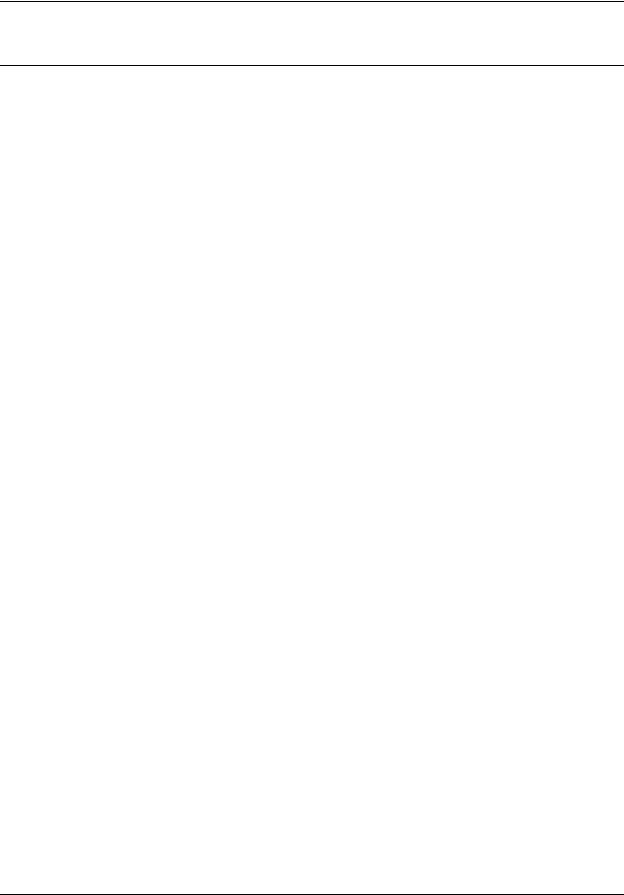
9
Contents
Regulatory information . . . . . . . . . . . . . . . . . . . . . . . . . . . . . . . . . . . . . . . . . 17
North American regulatory information . . . . . . . . . . . . . . . . . . . . . . . . . . . . . . . . . . . . 17 Canadian Notice . . . . . . . . . . . . . . . . . . . . . . . . . . . . . . . . . . . . . . . . . . . . . . . . . . 17 Federal Communications Commission (FCC) Notice . . . . . . . . . . . . . . . . . . . . . . 18 Ringer Equivalence Number (REN) . . . . . . . . . . . . . . . . . . . . . . . . . . . . . . . . . . . 18 EMI/EMC (FCC Part 15) . . . . . . . . . . . . . . . . . . . . . . . . . . . . . . . . . . . . . . . . . . . . 18 Important safety instructions . . . . . . . . . . . . . . . . . . . . . . . . . . . . . . . . . . . . . . . . . 19 Safety . . . . . . . . . . . . . . . . . . . . . . . . . . . . . . . . . . . . . . . . . . . . . . . . . . . . . . . . . . 20 Enhanced 911 configuration . . . . . . . . . . . . . . . . . . . . . . . . . . . . . . . . . . . . . . . . . 21 Radio-frequency interference . . . . . . . . . . . . . . . . . . . . . . . . . . . . . . . . . . . . . . . . 21 Telecommunication registration . . . . . . . . . . . . . . . . . . . . . . . . . . . . . . . . . . . . . . 21
International regulatory information . . . . . . . . . . . . . . . . . . . . . . . . . . . . . . . . . . . . . . . 22 Safety . . . . . . . . . . . . . . . . . . . . . . . . . . . . . . . . . . . . . . . . . . . . . . . . . . . . . . . . . . 23 Additional safety information . . . . . . . . . . . . . . . . . . . . . . . . . . . . . . . . . . . . . . . . . 23 ITU standardization compliance . . . . . . . . . . . . . . . . . . . . . . . . . . . . . . . . . . . . . . 24
Chapter 1
Getting started with BCM50 . . . . . . . . . . . . . . . . . . . . . . . . . . . . . . . . . . . . . 25
About this guide . . . . . . . . . . . . . . . . . . . . . . . . . . . . . . . . . . . . . . . . . . . . . . . . . . . . . . 25 Purpose . . . . . . . . . . . . . . . . . . . . . . . . . . . . . . . . . . . . . . . . . . . . . . . . . . . . . . . . . 25 Audience . . . . . . . . . . . . . . . . . . . . . . . . . . . . . . . . . . . . . . . . . . . . . . . . . . . . . . . . 25 Organization . . . . . . . . . . . . . . . . . . . . . . . . . . . . . . . . . . . . . . . . . . . . . . . . . . . . . 26 About BCM50 . . . . . . . . . . . . . . . . . . . . . . . . . . . . . . . . . . . . . . . . . . . . . . . . . . . . . . . 26 BCM50 key elements . . . . . . . . . . . . . . . . . . . . . . . . . . . . . . . . . . . . . . . . . . . . . . 26 Symbols and conventions used in this guide . . . . . . . . . . . . . . . . . . . . . . . . . . . . . . . . 28 Related publications . . . . . . . . . . . . . . . . . . . . . . . . . . . . . . . . . . . . . . . . . . . . . . . . . . 29 How to get help . . . . . . . . . . . . . . . . . . . . . . . . . . . . . . . . . . . . . . . . . . . . . . . . . . . . . . 31
Chapter 2
Introducing the BCM50 hardware. . . . . . . . . . . . . . . . . . . . . . . . . . . . . . . . . 35
Main units . . . . . . . . . . . . . . . . . . . . . . . . . . . . . . . . . . . . . . . . . . . . . . . . . . . . . . . . . . 35 Expansion unit and media bay modules . . . . . . . . . . . . . . . . . . . . . . . . . . . . . . . . . . . 38 Media bay modules . . . . . . . . . . . . . . . . . . . . . . . . . . . . . . . . . . . . . . . . . . . . . . . . 39 BCM50 hardware . . . . . . . . . . . . . . . . . . . . . . . . . . . . . . . . . . . . . . . . . . . . . . . . . . . . . 46 Rackmount shelf . . . . . . . . . . . . . . . . . . . . . . . . . . . . . . . . . . . . . . . . . . . . . . . . . . 46 Patch panel . . . . . . . . . . . . . . . . . . . . . . . . . . . . . . . . . . . . . . . . . . . . . . . . . . . . . . 47 Wallmount bracket . . . . . . . . . . . . . . . . . . . . . . . . . . . . . . . . . . . . . . . . . . . . . . . . 47 Wiring field card (WFC) . . . . . . . . . . . . . . . . . . . . . . . . . . . . . . . . . . . . . . . . . . . . . 48 BCM50 components . . . . . . . . . . . . . . . . . . . . . . . . . . . . . . . . . . . . . . . . . . . . . . . . . . 49
BCM50 Installation and Maintenance Guide

10 Contents
Power supply . . . . . . . . . . . . . . . . . . . . . . . . . . . . . . . . . . . . . . . . . . . . . . . . . . . . . 49 Power supply adapter cord (international users) . . . . . . . . . . . . . . . . . . . . . . . . . . 49 Uninterruptable power supply . . . . . . . . . . . . . . . . . . . . . . . . . . . . . . . . . . . . . . . . 50 Hard disk . . . . . . . . . . . . . . . . . . . . . . . . . . . . . . . . . . . . . . . . . . . . . . . . . . . . . . . . 51 Cooling fan . . . . . . . . . . . . . . . . . . . . . . . . . . . . . . . . . . . . . . . . . . . . . . . . . . . . . . 51 RJ-21 telephony connector . . . . . . . . . . . . . . . . . . . . . . . . . . . . . . . . . . . . . . . . . . 52 Router card . . . . . . . . . . . . . . . . . . . . . . . . . . . . . . . . . . . . . . . . . . . . . . . . . . . . . . 53
Field-replaceable units . . . . . . . . . . . . . . . . . . . . . . . . . . . . . . . . . . . . . . . . . . . . . . . . 53 Telephones and adapters . . . . . . . . . . . . . . . . . . . . . . . . . . . . . . . . . . . . . . . . . . . . . . 54 Accessories . . . . . . . . . . . . . . . . . . . . . . . . . . . . . . . . . . . . . . . . . . . . . . . . . . . . . . 57
Chapter 3
Viewing the BCM50 system LEDs . . . . . . . . . . . . . . . . . . . . . . . . . . . . . . . . 59
System status LEDs . . . . . . . . . . . . . . . . . . . . . . . . . . . . . . . . . . . . . . . . . . . . . . . . . . 59 LAN port LEDs . . . . . . . . . . . . . . . . . . . . . . . . . . . . . . . . . . . . . . . . . . . . . . . . . . . . . . . 60 ADSL router LEDs (BCM50a only) . . . . . . . . . . . . . . . . . . . . . . . . . . . . . . . . . . . . . . . 62 Ethernet router LEDs (BCM50e only) . . . . . . . . . . . . . . . . . . . . . . . . . . . . . . . . . . . . . 63 Media bay module LEDs (expansion units only) . . . . . . . . . . . . . . . . . . . . . . . . . . . . . 64
DTM LEDs . . . . . . . . . . . . . . . . . . . . . . . . . . . . . . . . . . . . . . . . . . . . . . . . . . . . . . . 65
BRIM LEDs . . . . . . . . . . . . . . . . . . . . . . . . . . . . . . . . . . . . . . . . . . . . . . . . . . . . . . 66
Chapter 4
Determining DHCP server configuration and IP address. . . . . . . . . . . . . . 67
BCM50 main unit (no integrated router) . . . . . . . . . . . . . . . . . . . . . . . . . . . . . . . . . . . |
67 |
If an external DHCP server is not present . . . . . . . . . . . . . . . . . . . . . . . . . . . . . . . |
67 |
If an external DHCP server is present . . . . . . . . . . . . . . . . . . . . . . . . . . . . . . . . . . |
68 |
BCM50a or BCM50e (with integrated router) . . . . . . . . . . . . . . . . . . . . . . . . . . . . . . . |
68 |
Chapter 5
Installing the BCM50 system . . . . . . . . . . . . . . . . . . . . . . . . . . . . . . . . . . . . 71
Chapter 6
Checking the installation prerequisites . . . . . . . . . . . . . . . . . . . . . . . . . . . . 75
Environmental requirements . . . . . . . . . . . . . . . . . . . . . . . . . . . . . . . . . . . . . . . . . . . . 75 Electrical requirements . . . . . . . . . . . . . . . . . . . . . . . . . . . . . . . . . . . . . . . . . . . . . . . . 75 Site telephony wiring requirements . . . . . . . . . . . . . . . . . . . . . . . . . . . . . . . . . . . . . . . 76 Digital loop . . . . . . . . . . . . . . . . . . . . . . . . . . . . . . . . . . . . . . . . . . . . . . . . . . . . . . 76 Analog loop . . . . . . . . . . . . . . . . . . . . . . . . . . . . . . . . . . . . . . . . . . . . . . . . . . . . . . 77 System equipment, supplies, and tools . . . . . . . . . . . . . . . . . . . . . . . . . . . . . . . . . . . . 77 Basic hardware . . . . . . . . . . . . . . . . . . . . . . . . . . . . . . . . . . . . . . . . . . . . . . . . . . . 77 Optional equipment . . . . . . . . . . . . . . . . . . . . . . . . . . . . . . . . . . . . . . . . . . . . . . . . 77 Other hardware and tools . . . . . . . . . . . . . . . . . . . . . . . . . . . . . . . . . . . . . . . . . . . 78
N0027152 01

|
Contents 11 |
Chapter 7 |
|
Installing the main unit . . . . . . . . . . . . . . . . . . . . . . . . . . . . . . . . . . . . . . . |
. . 79 |
Unpacking the main unit . . . . . . . . . . . . . . . . . . . . . . . . . . . . . . . . . . . . . . . . . . . . . |
. . 80 |
Installing the BCM50 unit in an equipment rack . . . . . . . . . . . . . . . . . . . . . . . . . . . |
. . 80 |
Installing the BCM50 unit on the rackmount shelf . . . . . . . . . . . . . . . . . . . . . . . . |
. 81 |
Installing the BCM50 unit on the wall . . . . . . . . . . . . . . . . . . . . . . . . . . . . . . . . . . . . |
. 84 |
Installing the wiring field card (optional) . . . . . . . . . . . . . . . . . . . . . . . . . . . . . . . |
. 88 |
Installing the BCM50 unit on a desktop or shelf . . . . . . . . . . . . . . . . . . . . . . . . . . . . |
. 89 |
Next step . . . . . . . . . . . . . . . . . . . . . . . . . . . . . . . . . . . . . . . . . . . . . . . . . . . . . . . . . . |
. 90 |
Chapter 8
Installing an expansion unit . . . . . . . . . . . . . . . . . . . . . . . . . . . . . . . . . . . . . 91
Unpacking the expansion unit . . . . . . . . . . . . . . . . . . . . . . . . . . . . . . . . . . . . . . . . . . . 92 Verifying the media bay module switch settings . . . . . . . . . . . . . . . . . . . . . . . . . . . . . 93 Installing a media bay module in an expansion unit . . . . . . . . . . . . . . . . . . . . . . . . . . 95 Installing the expansion unit . . . . . . . . . . . . . . . . . . . . . . . . . . . . . . . . . . . . . . . . . . . . 95 Next step . . . . . . . . . . . . . . . . . . . . . . . . . . . . . . . . . . . . . . . . . . . . . . . . . . . . . . . . . . . 95
Chapter 9
Connecting the cables to the BCM50 system . . . . . . . . . . . . . . . . . . . . . . . 97
Connecting the expansion unit . . . . . . . . . . . . . . . . . . . . . . . . . . . . . . . . . . . . . . . . . |
. 98 |
Connecting the power supply . . . . . . . . . . . . . . . . . . . . . . . . . . . . . . . . . . . . . . . . . . |
100 |
Connecting the lines and extensions . . . . . . . . . . . . . . . . . . . . . . . . . . . . . . . . . . . . . |
102 |
Wiring warnings . . . . . . . . . . . . . . . . . . . . . . . . . . . . . . . . . . . . . . . . . . . . . . . . . . |
103 |
Connecting lines and extensions to the RJ-21 telephony connector . . . . . . . . . |
104 |
Connecting telephone lines to the expansion units . . . . . . . . . . . . . . . . . . . . . . . |
105 |
Connecting extensions to the expansion units . . . . . . . . . . . . . . . . . . . . . . . . . . |
106 |
Connecting the auxiliary equipment . . . . . . . . . . . . . . . . . . . . . . . . . . . . . . . . . . . . . |
107 |
Connecting an auxiliary ringer . . . . . . . . . . . . . . . . . . . . . . . . . . . . . . . . . . . . . . . |
107 |
Connecting an external paging system . . . . . . . . . . . . . . . . . . . . . . . . . . . . . . . . |
108 |
Connecting an external music source . . . . . . . . . . . . . . . . . . . . . . . . . . . . . . . . . |
109 |
Next step . . . . . . . . . . . . . . . . . . . . . . . . . . . . . . . . . . . . . . . . . . . . . . . . . . . . . . . . . . |
112 |
Chapter 10
Installing telephones and peripherals . . . . . . . . . . . . . . . . . . . . . . . . . . . . 113
System telephones . . . . . . . . . . . . . . . . . . . . . . . . . . . . . . . . . . . . . . . . . . . . . . . . . . 113 Analog terminal adapter 2 . . . . . . . . . . . . . . . . . . . . . . . . . . . . . . . . . . . . . . . . . . 113 Central Answering Position (CAP/eCAP) . . . . . . . . . . . . . . . . . . . . . . . . . . . . . . 114 Installing an emergency telephone . . . . . . . . . . . . . . . . . . . . . . . . . . . . . . . . . . . . . . 114 Installing IP Phones . . . . . . . . . . . . . . . . . . . . . . . . . . . . . . . . . . . . . . . . . . . . . . . . . . 115 Installing T7406 cordless systems . . . . . . . . . . . . . . . . . . . . . . . . . . . . . . . . . . . . . . . 115
BCM50 Installation and Maintenance Guide

12 Contents
Chapter 11
Installing the analog terminal adapter . . . . . . . . . . . . . . . . . . . . . . . . . . . . 117
Configuration overview . . . . . . . . . . . . . . . . . . . . . . . . . . . . . . . . . . . . . . . . . . . . . . . 117 Analog telephone . . . . . . . . . . . . . . . . . . . . . . . . . . . . . . . . . . . . . . . . . . . . . . . . 117 Analog data device . . . . . . . . . . . . . . . . . . . . . . . . . . . . . . . . . . . . . . . . . . . . . . . 118 Installing the ATA2 . . . . . . . . . . . . . . . . . . . . . . . . . . . . . . . . . . . . . . . . . . . . . . . . . . 118 Connecting the ATA2 . . . . . . . . . . . . . . . . . . . . . . . . . . . . . . . . . . . . . . . . . . . . . 118 Mounting the ATA2 . . . . . . . . . . . . . . . . . . . . . . . . . . . . . . . . . . . . . . . . . . . . . . . 119 Test insertion loss measurement . . . . . . . . . . . . . . . . . . . . . . . . . . . . . . . . . . . . 120 Configuring the ATA2 . . . . . . . . . . . . . . . . . . . . . . . . . . . . . . . . . . . . . . . . . . . . . . . . 121
Chapter 12
Configuring the BCM50 system . . . . . . . . . . . . . . . . . . . . . . . . . . . . . . . . . 123
Initial parameters overview . . . . . . . . . . . . . . . . . . . . . . . . . . . . . . . . . . . . . . . . . . 124 Startup parameters overview . . . . . . . . . . . . . . . . . . . . . . . . . . . . . . . . . . . . . . . . . 125
Chapter 13
Using Telset Administration to set the basic parameters . . . . . . . . . . . . 127
Configuring the initial parameters . . . . . . . . . . . . . . . . . . . . . . . . . . . . . . . . . . . . . . . 128 Next step . . . . . . . . . . . . . . . . . . . . . . . . . . . . . . . . . . . . . . . . . . . . . . . . . . . . . . . . . . 131
Chapter 14
Using Element Manager to set the basic parameters. . . . . . . . . . . . . . . . 133
Accessing the BCM50 system . . . . . . . . . . . . . . . . . . . . . . . . . . . . . . . . . . . . . . . . . . 134 Configuring the initial parameters . . . . . . . . . . . . . . . . . . . . . . . . . . . . . . . . . . . . . . . 135 Configuring the startup parameters . . . . . . . . . . . . . . . . . . . . . . . . . . . . . . . . . . . . . . 137 Next step . . . . . . . . . . . . . . . . . . . . . . . . . . . . . . . . . . . . . . . . . . . . . . . . . . . . . . . . . . 142
Chapter 15
Using the Startup Profile to configure parameters. . . . . . . . . . . . . . . . . . 143
Startup Profile requirements . . . . . . . . . . . . . . . . . . . . . . . . . . . . . . . . . . . . . . . . . . . 144 Configuring basic parameters . . . . . . . . . . . . . . . . . . . . . . . . . . . . . . . . . . . . . . . . . . 145 Next step . . . . . . . . . . . . . . . . . . . . . . . . . . . . . . . . . . . . . . . . . . . . . . . . . . . . . . . . . . 147
Chapter 16
Completing the initial installation (optional) . . . . . . . . . . . . . . . . . . . . . . . 149
Configuring the media bay module . . . . . . . . . . . . . . . . . . . . . . . . . . . . . . . . . . . . . . 150 Configuring modem settings . . . . . . . . . . . . . . . . . . . . . . . . . . . . . . . . . . . . . . . . . . . 151 Checking for software updates . . . . . . . . . . . . . . . . . . . . . . . . . . . . . . . . . . . . . . . . . 151 Configuring voice mail . . . . . . . . . . . . . . . . . . . . . . . . . . . . . . . . . . . . . . . . . . . . . . . . 151 Customizing security policies . . . . . . . . . . . . . . . . . . . . . . . . . . . . . . . . . . . . . . . . . . 152 Performing a backup . . . . . . . . . . . . . . . . . . . . . . . . . . . . . . . . . . . . . . . . . . . . . . . . . 152
N0027152 01

Contents 13
Chapter 17
Connecting the BCM50 system to the LAN and WAN . . . . . . . . . . . . . . . 153
Connecting the BCM50 system to the LAN . . . . . . . . . . . . . . . . . . . . . . . . . . . . . . . . 154 Connecting the BCM50 system to the WAN . . . . . . . . . . . . . . . . . . . . . . . . . . . . . . . 156 Next step . . . . . . . . . . . . . . . . . . . . . . . . . . . . . . . . . . . . . . . . . . . . . . . . . . . . . . . . . . 157
Chapter 18
Testing basic BCM50 functionality. . . . . . . . . . . . . . . . . . . . . . . . . . . . . . . 159
Reset to factory settings . . . . . . . . . . . . . . . . . . . . . . . . . . . . . . . . . . . . . . . . . . . . . . 163 Reset levels . . . . . . . . . . . . . . . . . . . . . . . . . . . . . . . . . . . . . . . . . . . . . . . . . . . . . 164 Activate the reset feature . . . . . . . . . . . . . . . . . . . . . . . . . . . . . . . . . . . . . . . . . . 164
Chapter 19
Replacing the BCM50 system components. . . . . . . . . . . . . . . . . . . . . . . . 167
Chapter 20
Replacing a power supply. . . . . . . . . . . . . . . . . . . . . . . . . . . . . . . . . . . . . . 169
Preparing the system for maintenance . . . . . . . . . . . . . . . . . . . . . . . . . . . . . . . . . . . 170 Removing the power supply . . . . . . . . . . . . . . . . . . . . . . . . . . . . . . . . . . . . . . . . . . . 170 Connect the new power supply . . . . . . . . . . . . . . . . . . . . . . . . . . . . . . . . . . . . . . . . . 171 Returning the system to operation . . . . . . . . . . . . . . . . . . . . . . . . . . . . . . . . . . . . . . . 171
Chapter 21
Replacing a main unit . . . . . . . . . . . . . . . . . . . . . . . . . . . . . . . . . . . . . . . . . 173
Preparing the system for maintenance . . . . . . . . . . . . . . . . . . . . . . . . . . . . . . . . . . . 174 Removing the main unit . . . . . . . . . . . . . . . . . . . . . . . . . . . . . . . . . . . . . . . . . . . . . . . 175 Installing the new main unit . . . . . . . . . . . . . . . . . . . . . . . . . . . . . . . . . . . . . . . . . . . . 176
Chapter 22
Replacing a media bay module. . . . . . . . . . . . . . . . . . . . . . . . . . . . . . . . . . 179
Chapter 23
Replacing an expansion unit . . . . . . . . . . . . . . . . . . . . . . . . . . . . . . . . . . . 183
Disconnecting the cables . . . . . . . . . . . . . . . . . . . . . . . . . . . . . . . . . . . . . . . . . . . . . . 184 Removing the expansion unit . . . . . . . . . . . . . . . . . . . . . . . . . . . . . . . . . . . . . . . . . . 184 Removing the MBM . . . . . . . . . . . . . . . . . . . . . . . . . . . . . . . . . . . . . . . . . . . . . . . . . . 186 Inserting the MBM in the new expansion unit . . . . . . . . . . . . . . . . . . . . . . . . . . . . . . 186 Installing the new expansion unit . . . . . . . . . . . . . . . . . . . . . . . . . . . . . . . . . . . . . . . . 187
Chapter 24
Replacing an internal component . . . . . . . . . . . . . . . . . . . . . . . . . . . . . . . 189
Special tools . . . . . . . . . . . . . . . . . . . . . . . . . . . . . . . . . . . . . . . . . . . . . . . . . . . . . . . 190 Preparing the system for maintenance . . . . . . . . . . . . . . . . . . . . . . . . . . . . . . . . . . . 190 Removing the main unit . . . . . . . . . . . . . . . . . . . . . . . . . . . . . . . . . . . . . . . . . . . . . . . 191
BCM50 Installation and Maintenance Guide

14 Contents
Opening the main unit case . . . . . . . . . . . . . . . . . . . . . . . . . . . . . . . . . . . . . . . . . . . . |
192 |
Removing an internal component . . . . . . . . . . . . . . . . . . . . . . . . . . . . . . . . . . . . . . . |
194 |
Inserting the new component . . . . . . . . . . . . . . . . . . . . . . . . . . . . . . . . . . . . . . . . . . |
198 |
Closing the main unit case . . . . . . . . . . . . . . . . . . . . . . . . . . . . . . . . . . . . . . . . . . . . |
201 |
Installing the main unit . . . . . . . . . . . . . . . . . . . . . . . . . . . . . . . . . . . . . . . . . . . . . . . . |
202 |
Appendix A
RJ-21 telephony connector wiring chart . . . . . . . . . . . . . . . . . . . . . . . . . . 205
Appendix B
LAN ports wiring chart . . . . . . . . . . . . . . . . . . . . . . . . . . . . . . . . . . . . . . . . 207
Appendix C
WAN ports wiring chart . . . . . . . . . . . . . . . . . . . . . . . . . . . . . . . . . . . . . . . . 209
Appendix D
Expansion ports wiring chart . . . . . . . . . . . . . . . . . . . . . . . . . . . . . . . . . . . 211
Appendix E
DTM wiring chart . . . . . . . . . . . . . . . . . . . . . . . . . . . . . . . . . . . . . . . . . . . . . 213
Appendix F
BRIM wiring chart. . . . . . . . . . . . . . . . . . . . . . . . . . . . . . . . . . . . . . . . . . . . . 215
Appendix G
GATM wiring chart . . . . . . . . . . . . . . . . . . . . . . . . . . . . . . . . . . . . . . . . . . . . 217
Appendix H
4x16 wiring charts . . . . . . . . . . . . . . . . . . . . . . . . . . . . . . . . . . . . . . . . . . . . 221
Appendix I
DSM16 and DSM32 wiring charts . . . . . . . . . . . . . . . . . . . . . . . . . . . . . . . . 225
Appendix J
ASM8, ASM8+, and GASM wiring chart . . . . . . . . . . . . . . . . . . . . . . . . . . . 227
Appendix K
System region attributes . . . . . . . . . . . . . . . . . . . . . . . . . . . . . . . . . . . . . . . 229
Regional default system values . . . . . . . . . . . . . . . . . . . . . . . . . . . . . . . . . . . . . . . . . 229 Regional language default values . . . . . . . . . . . . . . . . . . . . . . . . . . . . . . . . . . . . 230 Regional caller ID display formats . . . . . . . . . . . . . . . . . . . . . . . . . . . . . . . . . . . . 231 Regional companding law . . . . . . . . . . . . . . . . . . . . . . . . . . . . . . . . . . . . . . . . . . 231 Regional media bay module availability . . . . . . . . . . . . . . . . . . . . . . . . . . . . . . . 231 Regional PRI line protocol support . . . . . . . . . . . . . . . . . . . . . . . . . . . . . . . . . . . 232
ISDN line services . . . . . . . . . . . . . . . . . . . . . . . . . . . . . . . . . . . . . . . . . . . . . . . . . . . 233 Define time zones by country and language . . . . . . . . . . . . . . . . . . . . . . . . . . . . . . . 234 System defaults . . . . . . . . . . . . . . . . . . . . . . . . . . . . . . . . . . . . . . . . . . . . . . . . . . . . . 235
N0027152 01

Contents 15
Restriction filter defaults . . . . . . . . . . . . . . . . . . . . . . . . . . . . . . . . . . . . . . . . . . . 236 Digital trunk types . . . . . . . . . . . . . . . . . . . . . . . . . . . . . . . . . . . . . . . . . . . . . . . . . . . 237 CallPilot regions . . . . . . . . . . . . . . . . . . . . . . . . . . . . . . . . . . . . . . . . . . . . . . . . . . . . . 238
Index . . . . . . . . . . . . . . . . . . . . . . . . . . . . . . . . . . . . . . . . . . . . . . . . . . . . . . . 241
BCM50 Installation and Maintenance Guide

16 Contents
N0027152 01
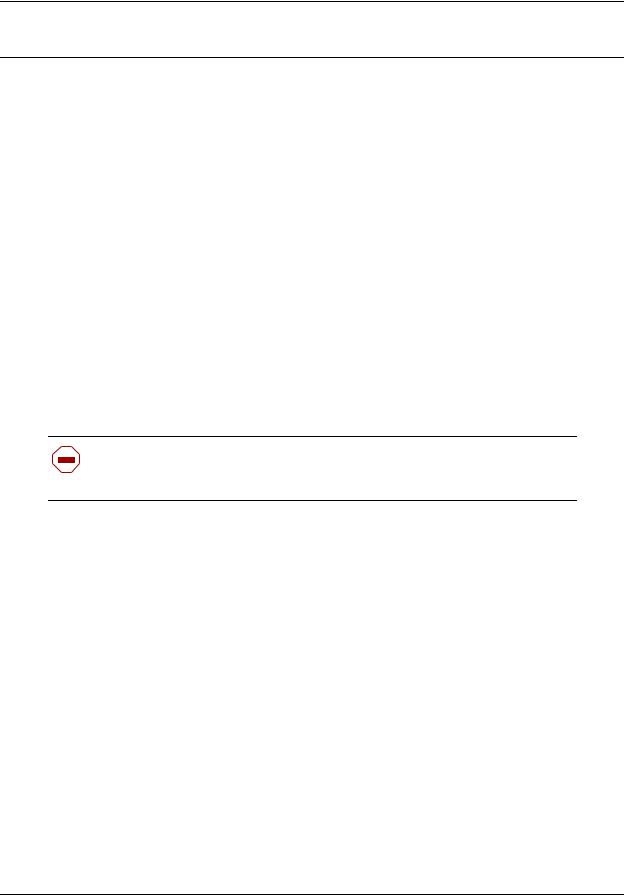
17
Regulatory information
Refer to the following sections for regulatory information on the BCM50 system:
•“North American regulatory information”
•“International regulatory information” on page 22
North American regulatory information
This Class A device complies with Part 68 & Part 15 of the FCC Rules and ICES-003 Class A Canadian EMI requirements. Operation is subject to the following two conditions (1) This device may not cause harmful interference and (2) this device must accept any interference received, including interference that may cause undesired operation.
Repairs to certified equipment should be coordinated by a representative designated by the supplier. Any repairs or alterations made by the user to this equipment, or equipment malfunctions, may give the telecommunications company cause to request the user to disconnect the equipment. Users should ensure for their own protection that the electrical ground connections of the power utility, telephone lines and internal metallic water pipe system, if present, are connected together. This precaution may be particularly important in rural areas.
Caution: Users should not attempt to make such connections themselves, but should contact the appropriate electric inspection authority, or electrician, as appropriate.
Do not attempt to repair this equipment. If you experience trouble, write for warranty and repair information:
USA |
Canada |
Nortel |
Nortel Repair Service Centre 30 |
640 Massman Drive |
30 Norelco Drive |
Nashville, TN, USA |
Weston Ontario, Canada |
37210 |
M9L 2X6 |
For warranty and repair service outside the USA or Canada, please contact your distributor.
Canadian Notice
The Industry Canada designation identifies certified equipment. This certification means that the equipment meets telecommunications network protective, operational and safety requirements as prescribed in the appropriate Terminal Equipment Technical Requirements document(s). The Department does not guarantee the equipment will operate to the user's satisfaction.
BCM50 Installation and Maintenance Guide

18 Regulatory information
Federal Communications Commission (FCC) Notice
FCC registration number: This telephone equipment complies with Part 68, Rules and Regulations, of the FCC for connection to the Public Switched Telephone Network.
Your connection to the Public Switched Telephone Network must comply with these FCC rules:
•Before installing this equipment, users should ensure that it is permissible to be connected to the facilities of the local telecommunications company. The equipment must also be installed using an acceptable method of connection. The customer should be aware that compliance with the above conditions may not prevent degradation of service in some situations. See installation instructions for details.
•Use only an FCC Part 68-compliant Universal Service Order Code (USOC) network interface jack, as specified in the installation instructions, to connect to the Public Switched Telephone Network.
•If the equipment causes harm to the telephone network, the telephone company will notify you in advance that temporary discontinuance of the product may be required. But if advance notice isn’t practical, the telephone company will notify you as soon as possible. You will also be advised of your right to file a complaint with the FCC, if you believe it is necessary.
Ringer Equivalence Number (REN)
The REN provides an indication of the maximum number of terminals allowed to be connected to a telephone interface. The termination on an interface may consist of any combination of devices subject only to the requirement that the sum of the RENs of all the devices does not exceed 5.
EMI/EMC (FCC Part 15)
This equipment has been tested and found to comply with the limits for a Class A digital device, pursuant to Part 15 of the FCC Rules. These limits are designed to provide reasonable protection against harmful interference in a residential installation. This equipment generates, uses and can radiate radio frequency energy and, if not installed and used in accordance with the instructions, may cause harmful interference to radio communications. However, there is no guarantee that interference will not occur in a particular installation. If this equipment does cause harmful interference to radio or television reception, which can be determined by turning the equipment off and on, the user is encouraged to try to correct the interference by one or more of the following measures:
•Reorient or relocate the receiving antenna.
•Increase the separation between the equipment and receiver.
•Connect the equipment into an outlet on a circuit different from that to which the receiver is connected.
•Consult the dealer or an experienced radio/TV technician for help.
Changes or modifications not expressly approved by the party responsible for compliance could void the user’s authority to operate the equipment.
N0027152 01
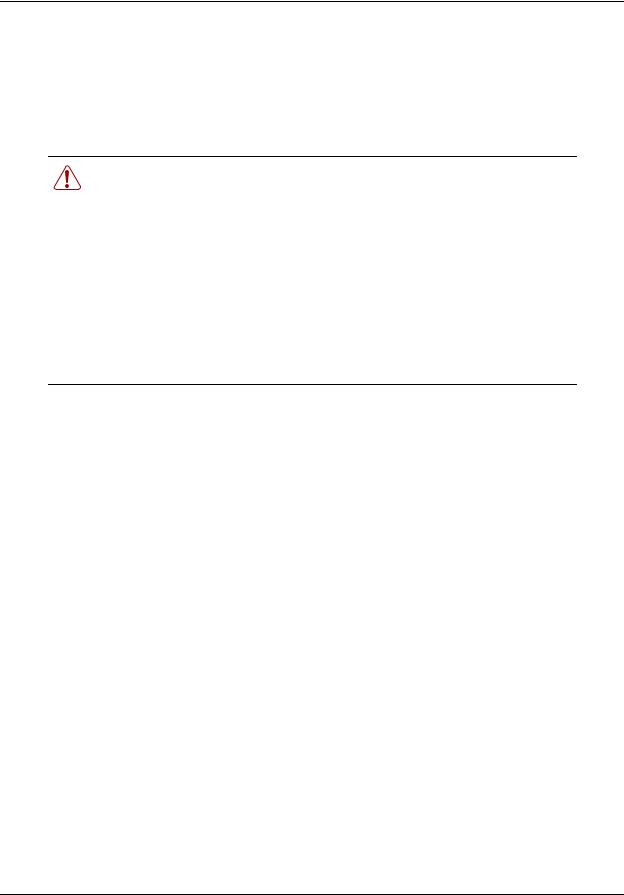
Regulatory information 19
Important safety instructions
The following safety instructions cover the installation and use of the Product. Read carefully and retain for future reference.
Installation
Warning: To avoid electrical shock hazard to personnel or equipment damage observe the following precautions when installing telephone equipment:
•Never install telephone wiring during a lightning storm.
•Never install telephone jacks in wet locations unless the jack is specifically designed for wet locations.
•Never touch uninsulated telephone wires or terminals unless the telephone line has been disconnected at the network interface.
Use caution when installing or modifying telephone lines. The exclamation point within an equilateral triangle is intended to alert the user to the presence of important operating and maintenance (servicing) instructions in the literature accompanying the product.
Use
When using your telephone equipment, basic safety precautions should always be followed to reduce risk of fire, electric shock and injury to persons, including the following:
1Read and understand all instructions.
2Follow the instructions marked on the product.
3Unplug this product (or host equipment) from the wall outlet before cleaning. Do not use liquid cleaners or aerosol cleaners. Use a damp cloth for cleaning.
4Do not use this product near water, for example, near a bath tub, wash bowl, kitchen sink, or laundry tub, in a wet basement, or near a swimming pool.
5Do not place this product on an unstable cart, stand or table. The product may fall, causing serious damage to the product.
6This product should never be placed near or over a radiator or heat register. This product should not be placed in a built-in installation unless proper ventilation is provided.
7Do not allow anything to rest on the power cord. Do not locate this product where the cord will be abused by persons walking on it.
8Do not overload wall outlets and extension cords as this can result in the risk of fire or electric shock.
9Never spill liquid of any kind on the product.
10To reduce the risk of electric shock do not disassemble this product, but have it sent to a qualified service person when some service or repair work is required.
BCM50 Installation and Maintenance Guide
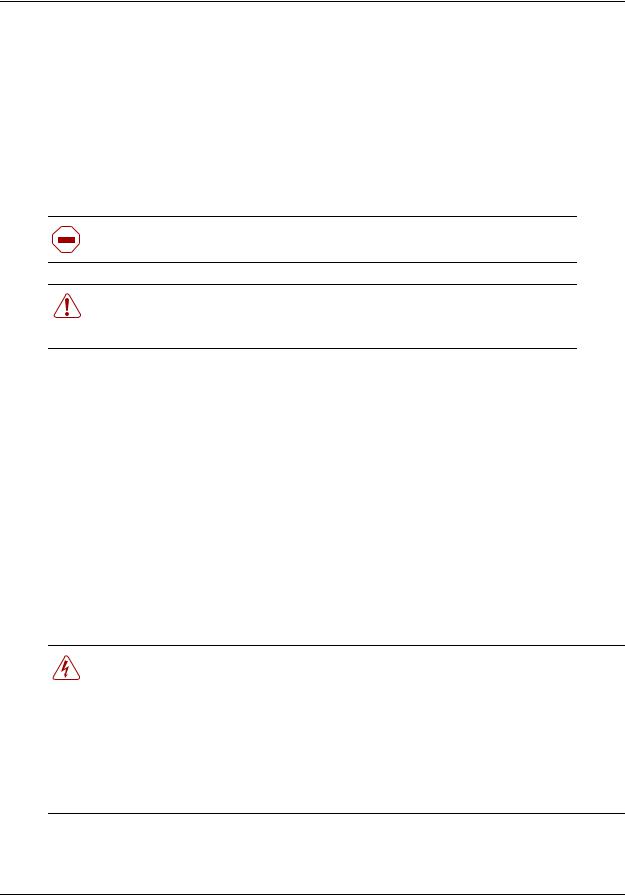
20 Regulatory information
11Unplug this product (or host equipment) from the wall outlet and refer servicing to qualified service personnel under the following conditions:
a When the power supply cord or plug is damaged or frayed.
b If the product has been exposed to rain, water or liquid has been spilled on the product, disconnect and allow the product to dry out to see if it still operates; but do not open up the product.
c If the product housing has been damaged.
d If the product exhibits a distinct change in performance.
Caution: To eliminate the possibility of accidental damage to cords, plugs, jacks, and the telephone, do not use sharp instruments during the assembly procedures.
Warning: Do not insert the plug at the free end of the handset cord directly into a wall or baseboard jack. Such misuse can result in unsafe sound levels or possible damage to the handset.
12 Save these instructions.
Use of a music source
In accordance with U.S. Copyright Law, a license may be required from the American Society of Composers, Authors and Publishers, or similar organization if Radio or TV broadcasts are transmitted through the Music On Hold or Background Music features of this telecommunication system.
Nortel hereby disclaims any liability arising out of the failure to obtain such a license.
Safety
Business Communications Manager 50 (BCM50) equipment meets all applicable requirements of both the CSA C22.2 No.60950 and UL 60950 Edition 3.
Danger: Risk of shock.
Read and follow installation instructions carefully.
Ensure the BCM50 is not powered and that all telephone/data cables are removed prior to opening the BCM50 unit in the field.
If installation of additional hardware and /or servicing is required, disconnect all telephone cable connections prior to unplugging the BCM50 modules.
Ensure the BCM50 is connected to a wall outlet with a third-wire protective earth connection prior to connecting any telecommunications cables to the BCM50 main unit or expansion units.
N0027152 01
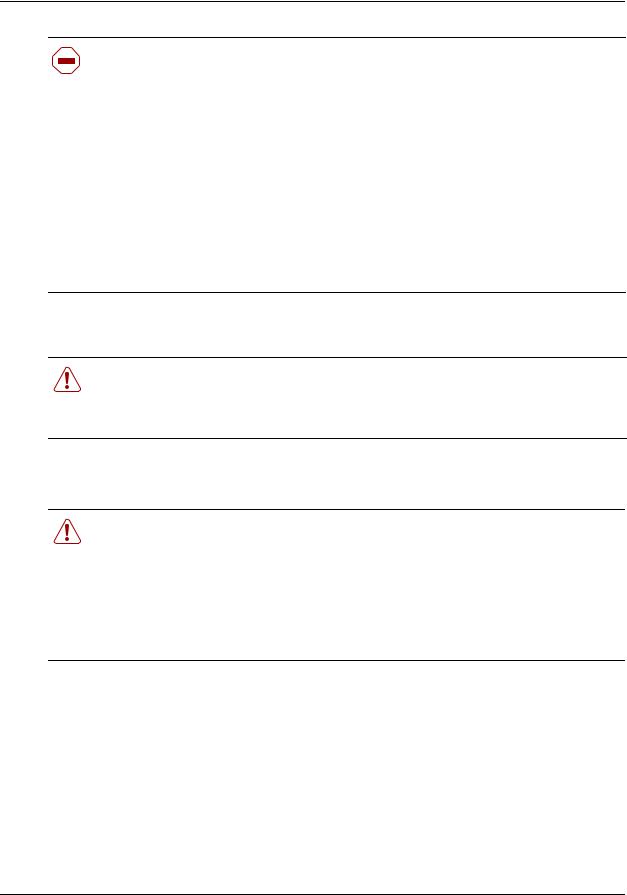
Regulatory information 21
Caution: Only qualified persons should service the system.
The installation and service of this hardware is to be performed only by service personnel having appropriate training and experience necessary to be aware of hazards to which they are exposed in performing a task and of measures to minimize the danger to themselves or other persons.
Electrical shock hazards from the telecommunication network and AC mains are possible with this equipment. To minimize risk to service personnel and users, the BCM50 system must be connected to an outlet with a third-wire ground.
Service personnel must be alert to the possibility of high leakage currents becoming available on metal system surfaces during power line fault events near network lines. These leakage currents normally safely flow to Protective Earth ground through the power cord. Therefore, it is mandatory that connection to an earthed outlet is performed first and removed last when cabling to the unit. Specifically, operations requiring the unit to be powered down must have the network connections (central office lines) removed first.
Enhanced 911 configuration
Warning:
Local, state and federal requirements for Emergency 911 services support by Customer Premises Equipment vary. Consult your telecommunication service provider regarding compliance with applicable laws and regulations.
Radio-frequency interference
Warning: Equipment generates RF energy.
This equipment generates, uses, and can radiate radio-frequency energy. If not installed and used in accordance with the installation manual, it may cause interference to radio communications. It has been tested and found to comply with the limits for a Class A computing device pursuant to Part 15 of the FCC Rules and with ICES.003, CLASS A Canadian EMI Requirements. Operation of this equipment in a residential area is likely to cause interference, in which case the user, at his or her own expense, will be required to take whatever measures may be required to correct the interference.
Telecommunication registration
BCM50 equipment meets all applicable requirements of both Industry Canada CS-03 and US Federal Communications Commission (FCC) Part 68 and has been registered under files Industry Canada 332D-5980A and FCC US: AB6KF15B20705 (key system), US: AB6MF15B20706 (hybrid system), and US: AB6PF15B23740 (PBX system). Connection of the BCM50 telephone system to the nationwide telecommunications network is made through a standard network interface jack that you can order from your local telecommunications company. This type of customer-provided equipment cannot be used on party lines or coin lines.
BCM50 Installation and Maintenance Guide
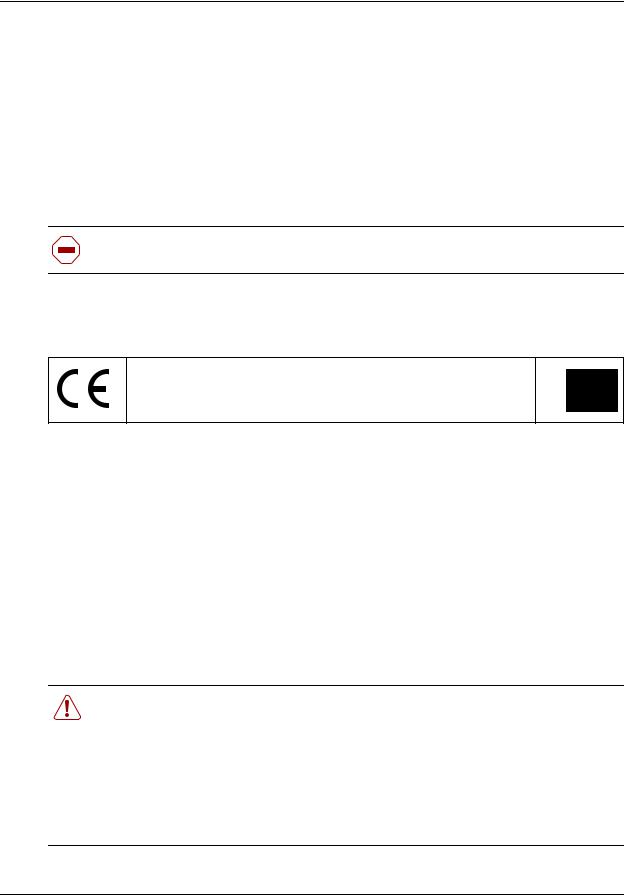
22 Regulatory information
Before installing this equipment, users should ensure that it is permissible to be connected to the facilities of the local telecommunications company. The equipment must also be installed using an acceptable method of connection. The customer should be aware that compliance with the above conditions may not prevent degradation of service in some situations.
Repairs to certified equipment should be made by an authorized maintenance facility designated by the supplier. Any repairs or alterations made by the user to this equipment, or equipment malfunctions, may give the telecommunications company cause to request the user to disconnect the equipment. Users should ensure for their own protection that the electrical ground connections of the power utility, telephone lines and internal metallic water pipe system, if present, are connected together. This precaution may be particularly important in rural areas.
Caution: Users should not attempt to make such connections themselves, but should contact the appropriate electric inspection authority, or electrician.
International regulatory information
The CE Marking on this equipment indicates compliance with the following:
This device conforms to Directive 1999/5/EC on Radio Equipment and
Telecommunications Terminal Equipment as adopted by the European
Parliament And Of The Council.
This is a class A product. In a domestic environment this product may cause radio interference in which case the user may be required to take adequate measures.
Hereby, Nortel declares that BCM50 units, with Model No. NT9T61XX, NT9T62XX, NT9T64XX, and NT9T65XX, are in compliance with the essential requirements and other relevant provisions of Directive 1999/5/EC.
Information is subject to change without notice. Nortel reserves the right to make changes in design or components as progress in engineering and manufacturing may warrant. This equipment has been tested and found to comply with the European Safety requirements EN 60950 and EMC requirements EN 55022 (Class A) and EN 55024. These EMC limits are designed to provide reasonable protection against harmful interference when the equipment is operated in a commercial and light industrial environment.
Warning:
This is a class A product. In a domestic environment this product may cause radio interference in which case the user may be required to take adequate measures. The above warning is inserted for regulatory reasons. If any customer believes that they have an interference problem, either because their Nortel product seems to cause interference or suffers from interference, they should contact their distributor immediately. The distributor will assist with a remedy for any problems and, if necessary, will have full support from Nortel.
N0027152 01
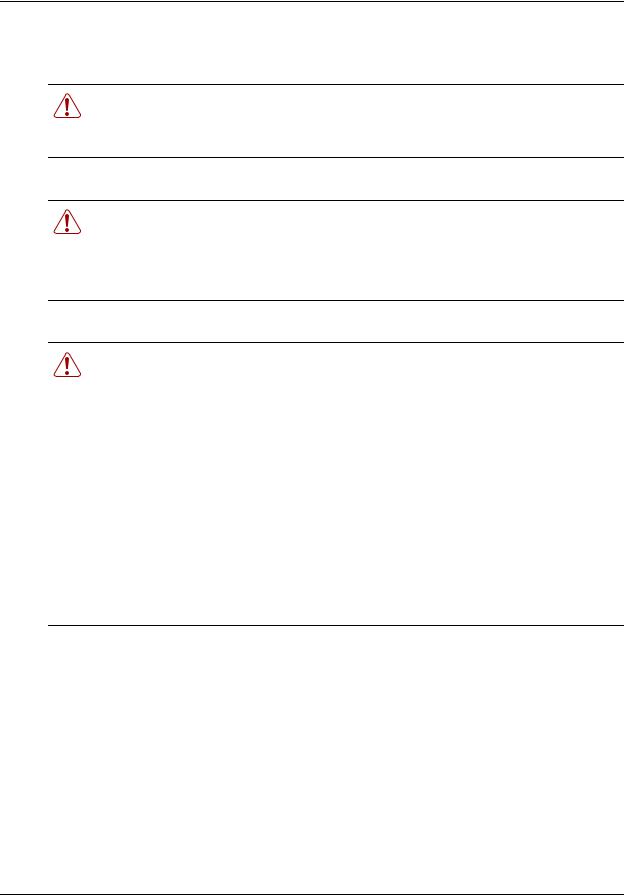
Regulatory information 23
Safety
Warning:
Only qualified service personnel may install this equipment. The instructions in this manual are intended for use by qualified service personnel only.
Warning: Risk of shock.
Ensure the BCM50 is unplugged from the power socket and that any telephone or network cables are unplugged before opening the BCM50.
Read and follow installation instructions carefully
Warning: Only qualified persons should service the system.
The installation and service of this hardware is to be performed only by service personnel having appropriate training and experience necessary to be aware of hazards to which they are exposed in performing a task and of measures to minimize the danger to themselves or other persons.
Electrical shock hazards from the telecommunication network and AC mains are possible with this equipment. To minimize risk to service personnel and users, the BCM50 system must be connected to an outlet with a third-wire Earth.
Service personnel must be alert to the possibility of high leakage currents becoming available on metal system surfaces during power line fault events near network lines. These leakage currents normally safely flow to Protective Earth through the power cord. Therefore, it is mandatory that connection to an earthed outlet is performed first and removed last when cabling to the unit. Specifically, operations requiring the unit to be powered down must have the network connections (exchange lines) removed first.
Additional safety information
The following interfaces (TNV) can be connected to the Public Switched Telephone Network in accordance with Nortel and the local carriers installation requirements:
•BCM50, CSC GATi Ports
•BCM50, CSC ADSL Port option
•Expansion Unit, Digital Trunk Module (T1/E1/ISDN)
•Expansion Unit, Global Analog Trunk Module 4 and 8 Port (Loop Start)
•Expansion Unit, CTM4/8 (Loop Start)
•Expansion Unit, 4x16 (Loop Start)
•Expansion Unit, BRIM (ST configuration)
BCM50 Installation and Maintenance Guide

24 Regulatory information
The following interfaces are designated as Safety Extra Low Voltage (SELV) and cannot be connected to unprotected plant wiring.
•BCM50, CSC Page Port
•BCM50, CSC Auxiliary Ringer Port
•BCM50, CSC Music On-Hold Port.
•BCM50, CSC Relay Port
•BCM50, CSC USB Port
•BCM50, CSC Ethernet Port including optional Ethernet Hub Ports
ITU standardization compliance
The following list provides voice/data applications and telephony support for BCM50:
•G.711 and G.729AB codecs
•V.27ter, V.29, and V.17 data modem modulation supported (T.38 fax control gateway)
•G3 fax
•T512.1 (Type 1 Receiver DTMF)
•G.168
•H.323
•Q.931
N0027152 01
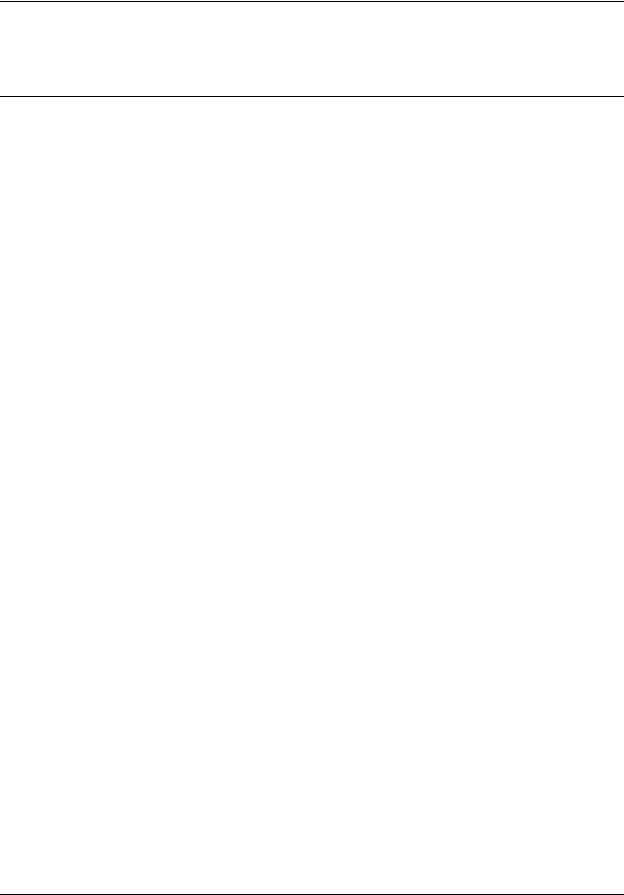
25
Chapter 1
Getting started with BCM50
This section contains information on the following topics:
•“About BCM50”
•“Symbols and conventions used in this guide” on page 28
•“Related publications” on page 29
•“How to get help” on page 31
About this guide
The BCM50 Installation and Maintenance Guide describes how to install, configure, and maintain the BCM50 system.
Purpose
The concepts, operations, and tasks described in the guide relate to the hardware of the BCM50 system. This guide provides task-based information on how to install the hardware components and perform basic configuration tasks.
Use the Nortel Element Manager (EM), Startup Profile, and Telset Administration to configure various BCM50 parameters.
In brief, the information in this guide explains:
•Installing hardware components
•Connecting to the LAN and WAN
•Configuring basic parameters
•Replacing components
•Testing the system
Audience
The BCM50 Installation and Maintenance Guide is directed to installers responsible for installing, configuring, and maintaining BCM50 systems.
To use this guide, you must:
•be an authorized BCM50 installer/administrator within your organization
•know basic Nortel BCM50 terminology
•be knowledgeable about telephony and IP networking technology
BCM50 Installation and Maintenance Guide

26 Chapter 1 Getting started with BCM50
Organization
This guide is organized for easy access to information that explains the concepts, operations, and procedures associated with the BCM50 system.
About BCM50
The Business Communications Manager 50 (BCM50) system provides private network and telephony management capability to small and medium-sized businesses.
The BCM50 system:
•integrates voice and data capabilities, IP Telephony gateway functions, and data-routing features into a single telephony system
•enables you to create and provide telephony applications for use in a business environment
BCM50 key elements
BCM50 includes the following key elements:
BCM50 main units
Three types of main units are available:
•BCM50 (Telephony and basic data)
The BCM50 main unit provides call processing and simple data networking functions. It also provides connections for telephones, Public Switched Telephone Network (PSTN) lines, and a LAN.
•BCM50a (with ADSL Router)
The BCM50a main unit provides call processing, data routing features, and an integrated ADSL modem. It also provides connections for internal telephones, PSTN lines, a LAN, and an ADSL router.
•BCM50e (with Ethernet Router)
The BCM50e main unit provides call processing and data routing features. It also provides connections for telephones, PSTN lines, a LAN, and an Ethernet router.
BCM50 hardware
In addition to the main platform configurations, the following hardware is available:
•Expansion unit: An expansion unit is designed to accommodate a media bay module (MBM). The BCM50 main unit supports up to two expansion units.
•Small system wallmount bracket: A bracket designed for mounting the BCM50 main unit or expansion unit to a wall. An optional wiring field card (WFC) is available with the wallmount bracket, which provides RJ-45 connectors for all BCM50 main unit trunk and station interfaces. The WFC includes a terminal block to connect the auxiliary equipment.
N0027152 01

Chapter 1 Getting started with BCM50 27
•Small system rackmount shelf: A shelf designed for mounting up to four BCM50 units into a standard 19-inch equipment rack. An optional patch panel is available, which provides RJ-45 connectors for all BCM50 main unit trunk and station interfaces. The patch panel includes a terminal block to connect the auxiliary equipment.
BCM50 features
BCM50 supports the complete range of IP telephony features offered by existing BCM products.
You enable the following features by entering the appropriate keycodes (no additional hardware is required):
•VoIP Gateway (H.323): Up to 12 VoIP trunks
•VoIP Telephony Clients: Up to 32 VoIP Telephony clients, supporting the range of Nortel IP Phones.
BCM50 applications
BCM50 also supports many of the high-value applications provided on the existing BCM platforms.
You enable applications by entering the appropriate keycodes (no additional hardware is required). Some applications are:
•Voice Messaging for standard voice mail and auto-attendant features
•Unified Messaging providing integrated voice mail management between voice mail and common e-mail applications
•Fax Suite providing support for attached analog fax devices
•Voice Networking features
•LAN (computer telephony engine) CTE
BCM50 Installation and Maintenance Guide
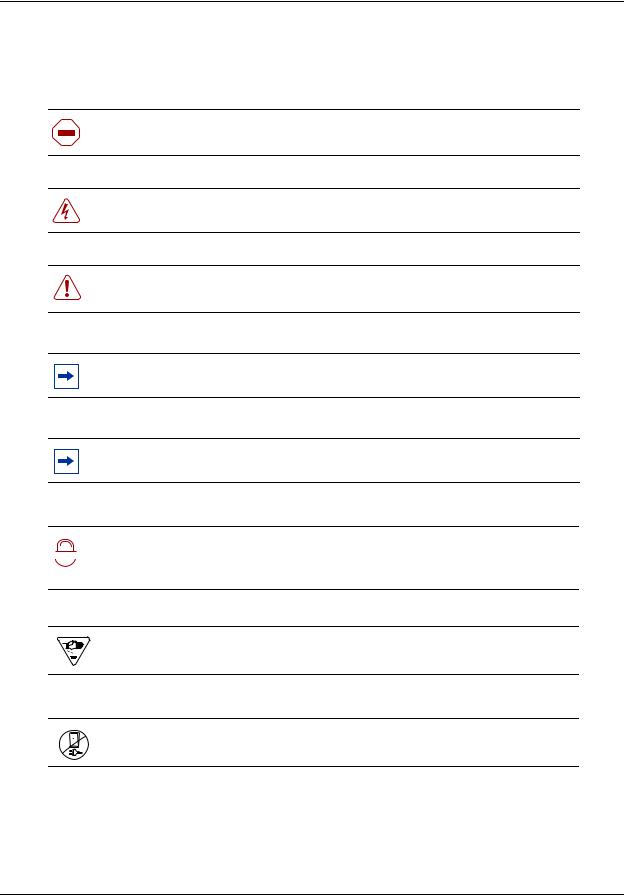
28 Chapter 1 Getting started with BCM50
Symbols and conventions used in this guide
These symbols are used to highlight critical information for the BCM50 system:
Caution: Alerts you to conditions where you can damage the equipment.
Danger: Alerts you to conditions where you can get an electrical shock.
Warning: Alerts you to conditions where you can cause the system to fail or work improperly.
Note: Alerts you to important information.
Tip: Alerts you to additional information that can help you perform a task.
Security Note: Indicates a point of system security where a default should be

 !
! 
 changed, or where the administrator needs to make a decision about the level of security required for the system.
changed, or where the administrator needs to make a decision about the level of security required for the system.
Warning: Alerts you to ground yourself with an antistatic grounding strap before performing the maintenance procedure.
Warning: Alerts you to remove the BCM50 main unit and expansion unit power cords from the ac outlet before performing any maintenance procedure.
N0027152 01
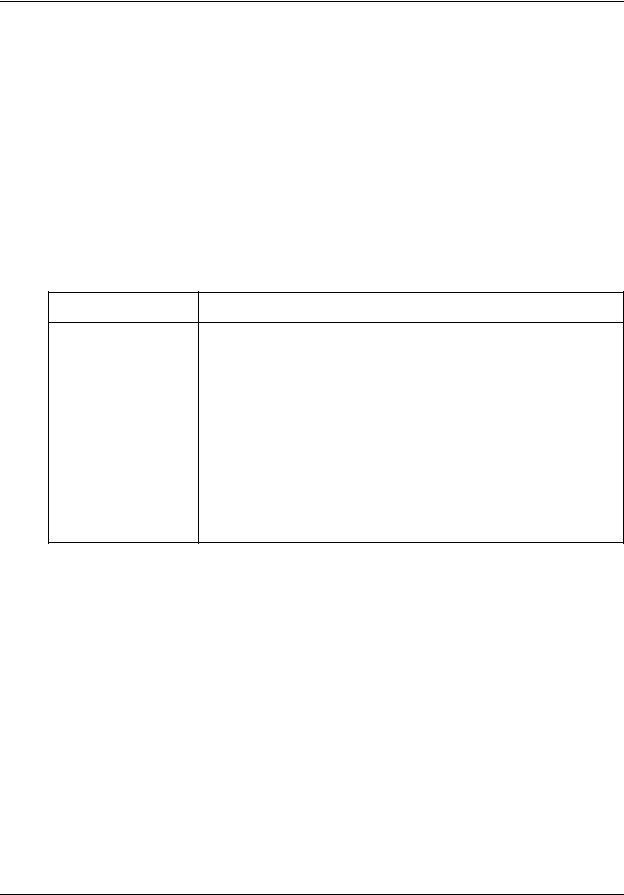
Chapter 1 Getting started with BCM50 29
The following conventions and symbols are used to represent the Business Series Terminal display and dialpad.
Convention |
Example |
Used for |
|
|
|
Word in a special font (shown in |
Pswd: |
Command line prompts on display telephones. |
the top line of the display) |
|
|
|
|
|
Underlined word in capital letters |
PLAY |
Display option. Available on two line display |
(shown in the bottom line of a |
|
telephones. Press the button directly below the |
two-line display telephone) |
|
option on the display to proceed. |
|
|
|
Dialpad buttons |
£ |
Buttons you press on the dialpad to select a |
|
|
particular option. |
|
|
|
The following text conventions are used in this guide to indicate the information described:
Convention |
Description |
bold Courier |
Indicates command names and options and text that you must enter. |
text |
Example: Use the info command. |
|
|
|
Example: Enter show ip {alerts|routes}. |
|
|
italic text |
Indicates book titles. |
|
|
plain Courier |
Indicates command syntax and system output (for example, prompts |
text |
and system messages). |
|
Example: Set Trap Monitor Filters |
|
|
FEATURE |
Indicates that you press the button with the coordinating icon on |
HOLD |
whichever set you are using. |
RELEASE |
|
Related publications
Related publications are listed below. To locate specific information, you can refer to the
Master Index of BCM50 Library.
BCM50 Core Guides
BCM50 Keycode Installation Guide (N0016865)
BCM50 Administration Guide (N0016868)
BCM50 Installation & Maintenance Guide (N0027152)
BCM50 ISDN Device Installation & Configuration Guide (N0027268)
BCM50 IP Telephone Installation and Configuration Guide (N0027269)
BCM50 Device Configuration Guide (N0027146)
BCM50 First Time Installation and Configuration Guide (N0027149)
BCM50 Installation and Maintenance Guide

30 Chapter 1 Getting started with BCM50
BCM50 LAN CTE Configuration Guide (N0027154)
BCM50 Networking Configuration Guide (N0027156)
BCM50 System Overview (N0027157)
BCM50 Analog Device Installation and Configuration Guide (N0035159)
BCM50 Telset Administration Guide (N0027176)
BCM50 Unified Messaging Installation and Maintenance Guide (N0027179)
BCM50a Integrated Router Configuration Guide (N0027181)
BCM50e Integrated Router Configuration Guide (N0027182)
BCM50 Call Detail Recording Guide (N0027926)
BCM50 Digital Telephone Installation and Configuration Guide (N0027330)
BCM50 Telephone Features User Guide (N0027160)
CallPilot and Call Center Guides
Call Center Agent Guide (N0027187)
Call Center Set Up and Operation Guide (N0027203)
Call Center Supervisor Guide (N0027206)
CallPilot 2.5 Unified Messaging Addendum (N0027223)
CallPilot 2.5 Unified Messaging User Guide for Internet Clients CallPilot 2.5 Unified Messaging User Guide for Lotus Notes CallPilot 2.5 Unified Messaging User Guide for Microsoft Outlook CallPilot 2.5 Unified Messaging User Guide for Novell GroupWise CallPilot Call Center Telephone Administration Guide (N0025637)
CallPilot Fax Set Up and Operation Guide (P0606017)
CallPilot Fax User Guide (N0027227)
CallPilot Manager Set Up and Operation Guide (N0027247)
CallPilot Message Networking Set Up and Operation Guide (N0027249)
CallPilot Message Networking User Guide (N0027253)
CallPilot Programming Record (N0027404)
CallPilot Quick Reference Card - CP Interface (N0027401)
CallPilot Quick Reference Card - NVM Interface (N0027379)
CallPilot Quick Reference Card - Remote Users (CP Interface) (N0027359)
CallPilot Quick Reference Card - Remote Users (NVM Interface) (N0027346)
CallPilot Reference Guide (N0027332)
N0027152 01
